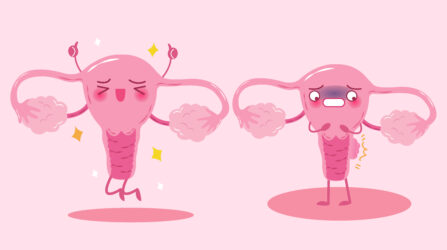For further information or Booking..
Causes of Ovarian Cancer
Ovarian cancer is the third most common cancer among Thai women, following breast and cervical cancer, with nearly 3,000 new cases annually. More than half of these patients die each year. If detected at stage 1, the cure rate can be as high as 90%. Although the exact cause of ovarian cancer is unknown, it is believed that frequent injury to the ovaries, combined with exposure to carcinogens, may contribute to the development of the disease.
Symptoms of Ovarian Cancer
Ovarian cancer symptoms are often hidden, making early detection challenging. Most patients are diagnosed at an advanced stage. Common symptoms include bloating, abdominal discomfort, poor digestion, and abdominal enlargement. These symptoms can resemble gastric conditions, leading to delayed diagnosis until the cancer is advanced.
Importance of Regular Screenings
It is crucial for women to undergo regular internal examinations annually. Early detection of an ovarian mass makes treatment easier and increases the chances of recovery. Key diagnostic methods include internal and detailed physical examinations. If a mass is detected near the uterus, further examinations, such as ultrasound, computed tomography (CT) scans, or MRIs, may be conducted. Blood tests for tumor markers are also used to aid in diagnosis.
Stages of Ovarian Cancer
- Stage 1: Cancer is confined to the ovaries.
- Stage 2: Cancer has spread to the pelvis.
- Stage 3: Cancer has spread to the abdominal cavity.
- Stage 4: Cancer has spread to the liver or other organs outside the abdominal cavity.
Most patients are diagnosed at stage 3, emphasizing the importance of prevention and early detection.
Ovarian Cancer Treatment
Ovarian cancer treatment involves a combination of surgery and chemotherapy, depending on the stage. Surgery includes the removal of both ovaries, fallopian tubes, uterus, abdominal fat, and lymph nodes to assess any cancer spread. After surgery, if cancer is at stage 1 without rupture, treatment may end there. For more advanced stages, chemotherapy is required to eliminate any remaining cancer cells.
Chemotherapy and Its Side Effects
Chemotherapy helps treat ovarian cancer, with a response rate of 75-80% in advanced-stage patients. Side effects include fatigue, infections, low white blood cell count, and low platelet count, mainly due to bone marrow suppression. Advances in medication have helped reduce these side effects. Hair loss, another common side effect, is usually temporary, with hair regrowing after treatment ends.
Follow-Up After Chemotherapy
After six cycles of chemotherapy, patients require regular follow-up examinations. These include internal exams, blood tests for cancer markers, and occasional CT scans. In the first two years post-treatment, check-ups are every three months. Between years 3-5, check-ups occur every 4-6 months. After five years, the frequency of visits may decrease, but regular monitoring remains crucial to detect any recurrence.
Care at Phyathai Sriracha Hospital
At Phyathai Sriracha Hospital, our experienced team of female obstetricians and gynecologists offers comprehensive care, from examinations and treatments to consultations for various women’s health issues. We utilize modern tools and technologies, with services available from 7:30 AM onwards.














